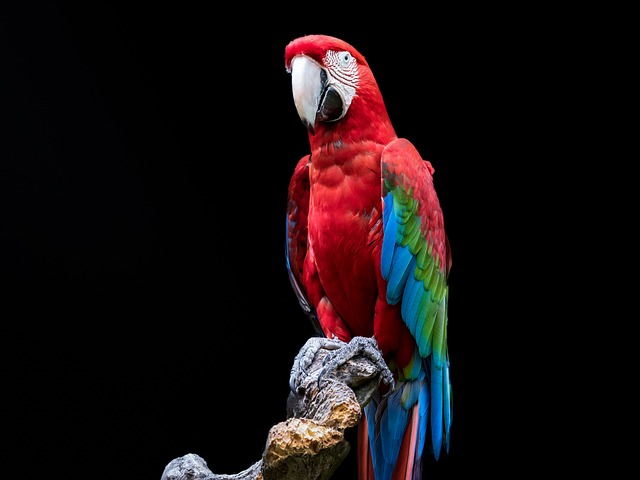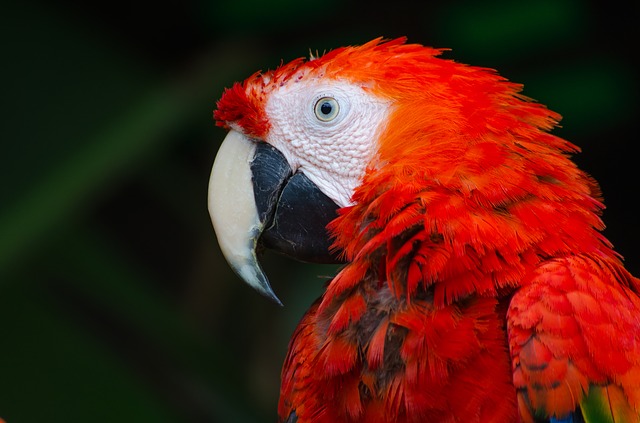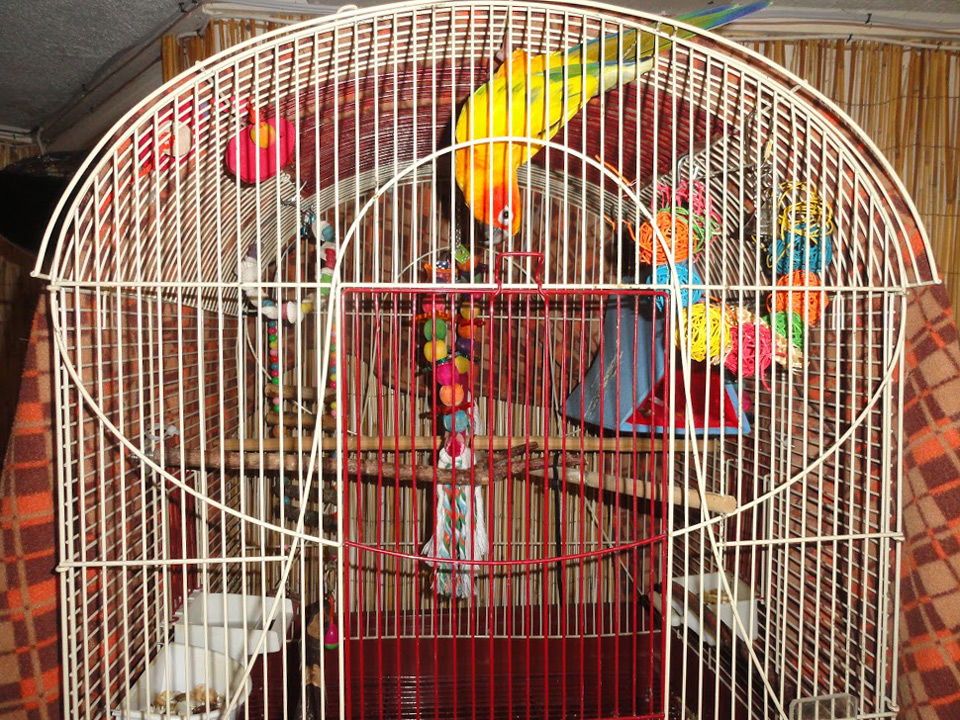Birds chew
Birds love to chew. Wood toys meet this desire. However, care must be taken to make sure that the wood doesn’t not get wet or dirty. Wet and soiled toys foster the growth of bacteria. Also, wood can splinter. A bird, Toby, loved to chew her wood toys. One splintered while she was chewing it and scratched the roof of her mouth. This caused some problems for a couple of days. This rarely happens, but it can. While wood toys satisfy the desire to chew and provide house of entertainment, they still need to be monitored closely.
Most milled woods can be used providing they are not treated with any chemical. Pine, maple, and soft woods are great for toys. Woods such as cedar or teak contain toxins that are harmful to birds. For wooden beads, if they are colored, make sure they are non-toxic. These are usually dyed with food coloring.
Leather
If you provide leather toys you must know the source of the leather. Some leathers are tanned with arsenic. The leather used in bird toys is not tanned with arsenic, instead it is vegetable tanned and is safe for your birds. Bird toys that contain leather are safe and so are any dog toys that are leather. If you make your own toys, be positive you are using safe leather. Also with leather, care must be taken to keep it clean. It can be a breeding ground for bacteria.
Plastic/Acrylic
Plastic toys are great for smaller birds, but care must be taken with plastic given to larger birds. Marbella-type beads should be used provided they are the right size for the bird. Small plastic beads are easily snapped and can be ingested by large birds. Light weight plastic will be shattered into dangerous shards by big beaks. Other plastic toys to avoid with larger birds are toys meant for small birds such as budgies. This includes the weighted toys that rock back and forth when the bird pecks at them. These toys contain lead weights and la large bird can crack these toys open. Ingested lead is toxic to people and birds alike and can kill a bird.
Rope
Many birds love rope toys. For some birds rope toys meet their desire to shred. They make excellent preening toys. The bird will take apart the rope strand by strand. These rope toys can help prevent feather plucking by giving birds another object to preen other than themselves. Many of the rope toys are also easy to wash and can be put in the washing machine. Do not add fabric softener and use a mild soap and rinse thoroughly. Carefully check the ropes for strands that are loose. These strands can end up wrapped around legs or toes. Some birds can also pull these strands out and ingest them. This can cause crop impactions or even intestinal blockages. By checking the ropes often and by observing how your bird plays with them, these problems can be avoided. The best type of rope to use is 100% cotton or un-oiled sisal. Nylon or polyester rope fibers can wrap around toes so tightly that it is very difficult to unwrap. If this happens it can cut off the flow of blood to the toe or limb.
Other
Bird owners get creative in finding toys cheap enough to keep them from the poor house. Some use baby toys such as rattles and teething rings. Others provide toothbrushes and dog chains. These are relatively safe for smaller and medium size birds. Larger birds need heavier duty items. Any material that can be destroyed by a bird can be a danger. Toys must not have dangerous inside materials.
Toys that contain feathers are also a good item for feather pluckers to play with. Like the rope toys, it will give the bird an acceptable object to over-preen.
The materials that are used to hang the toy can also be dangerous to the bird. There is no product out on any market that is one hundred percent safe. There will always be the bird who will figure out a way to use it differently than how it was intended. But by checking the toys and their hangers often, problems can be avoided and you “trouble-maker” can enjoy plenty of safe playtime.
Some of the different ways to hang toys include O-rings, C-rings or quick-links, and various clasps. There are many different products available and each toy manufacturer has a preferred type.
O-rings
This is one of the most popular ways to hang toys. Many manufacturers use these key ring style hangers on their toys. Unfortunately birds can get toes, beaks, or tongues caught in them. They are easy for some birds to pull apart. Another style of O-ring is pulled apart to open up. While these are easy for the bird to open, they are a little safer.
C-rings
C-rings are much safer to use. They are easy for the bird to open and sometimes the bird will tighten them up so the owner cannot even open them. They are recommended for toys instead of the )-rings.
Clasps
Birds can be injured by this type of holder. Birds are curious and will work at the clasp. Sometime they will remove and ingest pieces of it. Their tongues, toes, and beaks can also become caught in them.
Chains
Many bird toys are hung by chains. When selecting a toy, make sure that the chain is also species appropriate. The chain should be large enough that a bird cannot get his toes or beak caught in it. Closed links versus open links are safer. When the wooden toy around an unsafe chain is destroyed, the chain should be removed and thrown away.
Rings
Many toys contain rings of various types. The rings should be completely closed and size appropriate for the bird. This is to prevent toes or beaks from becoming lodged in them.
Wire Hangers
Some toys use wire hangers or wire cables to hang toys. These can be dangerous to use. Wire coat hangers that were bent into shape to hold the toy material have caused many severe injuries to birds. More than one bird had the wire coat hanger puncture its beak.
Wire cables that are used to hang toys have also proven dangerous. They can wrap around and choke the bird, hanging them. Also, some cables are coated with a plastic that the bird could ingest.
Bells
Bells make great toys providing that they are the right type. Bells should not be the jingle bell type. Beaks, tongues, and toes can get caught, injuring the bird. For larger birds, the clappers should be removed from the bells because the bird might remove them itself, also causing problems.
Other Types
There are a wide range of other types of holders. Some are safer than others. Make sure there are no parts than can be removed. Check to see if the bird can get a toe, tongue, or beak caught in them.



